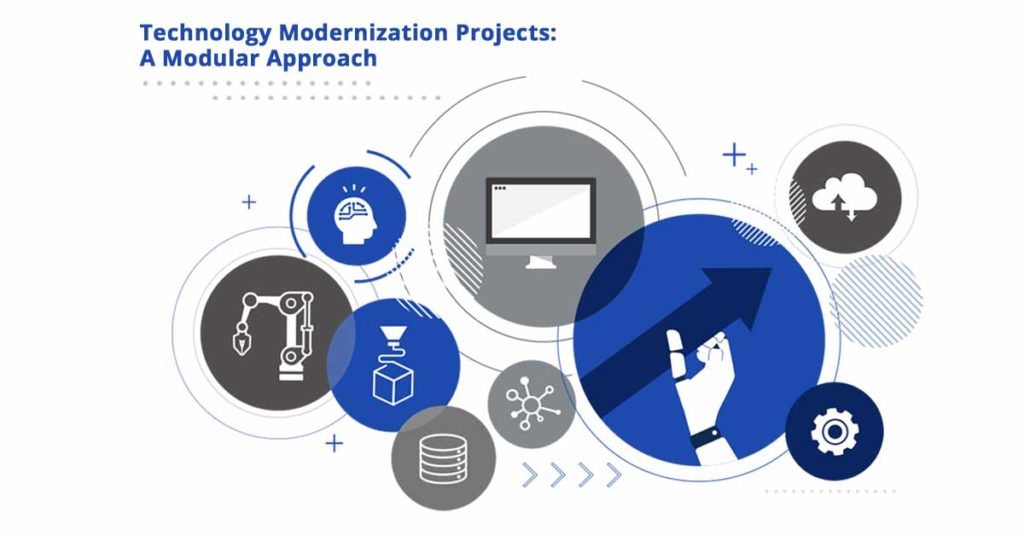Government leaders know that the public expects “Amazon-like” service but face many hurdles in modernizing digital services – tight budgets, competing priorities, executive and legislative buy-in, etc. With these citizen expectations and other challenges, it can often feel like the goal of digital transformation is a mountain too high to climb. This is where the concept of modularity comes in. Government agencies don’t need to modernize their systems, infrastructure, and processes completely. Digital transformation can occur incrementally, growing and building over time. This cost-effective approach helps the workforce adjust to new technologies and workflows.
Modular Approaches Help Agencies Big and Small
Implementing a modular approach to government IT modernization benefits public agencies of all sizes. Large state governments are turning to modular approaches across all lines of business, such as Medicaid Management Information Systems (MMIS) and unemployment insurance (UI). Many states, including Florida, have been embroiled in expensive litigation for years with vendors over mismanaged and overbudget system implementations. Local governments are using modular approaches to start their digital transformation journey with relatively few workforce and budgetary resources.
Don’t Boil the Ocean
A modular approach to government IT modernization builds on progress over time. When implemented effectively, early successes will build more internal buy-in across lines of business. In turn, future modernization will have a stronger foundation and fewer barriers to implementation.
Ask these questions at the beginning of your modernization journey:
- Which systems and processes are most vital to the public?
- Where is the “low-hanging fruit”?
- Which areas pose the most risk (breaches, data loss, downtime, etc.) that could be addressed by digital transformation?
- Which areas will offer tangible ROI over time through modernization? This could be cost-savings, increased productivity, worker efficiency, and customer satisfaction, along with others.
From Trend to Policy
Modularity is no longer an abstract concept – governments are enacting it as official policy across the country. Public leaders have been embarrassed by lawsuits, project delays, and poor service delivery. They recognize the value of an incremental approach and work with executive and legislative officials to ensure this is the path taken. Louisiana and Rhode Island included explicit modular approaches to MMIS modernization in their most recent budgets. The federal government is a few years ahead of lower levels in promoting modular approaches.
In 2016, the Centers for Medicare and Medicaid Services (CMS) issued guidance to states on how to certify their MMIS systems, a step required to receive critical federal funding.
Our new regulations require that states evolve their legacy…IT systems to leverage…industry-proven IT methods such as use of modularity…
Andy Slavitt, Acting Administration of CMS
This quote from New Jersey’s current IT strategic plan makes a strong case for the state’s modular approach to IT modernization.
OIT will avoid…Big contracts with massive, multi-year replacement strategies: With a high failure rate, it has been shown that projects over $6-10M have a very poor track record, with a low percentage of success – including prior New Jersey efforts.
New Jersey Office of Information Technology (OIT), Business & Technology Strategic Plan 2020-2022






